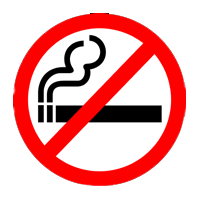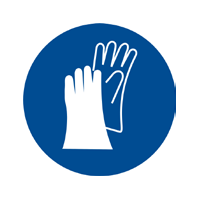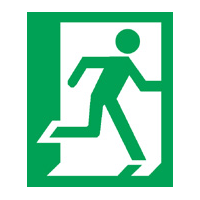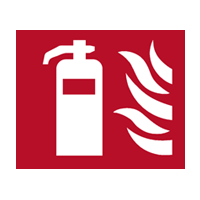Our offices will be closed for the holiday season from December 25, 2025, to January 11, 2026. For urgent matters, please contact support@pecb.com.
Our offices will be closed for the holiday season from December 25, 2025, to January 11, 2026. For urgent matters, please contact support@pecb.com.
Our offices will be closed for the holiday season from December 25, 2025, to January 11, 2026. For urgent matters, please contact support@pecb.com.
MIN READ
As there are nearly 7,000 different languages spoken worldwide, literally speaking, it is impossible for an individual to understand and speak all languages. Starting with English, which is considered the world’s most widely used language, still, there are people who do not speak it. Talking is often seen as the only way of communication. However, there are times when a picture is worth more than a thousand words.
The history of symbols dates back to prehistory. Ancient people used to use symbols as a form of communication. During the history, traces of ancient writings were found incised in stones, walls, and other ancient scripts. Some of these prehistoric writings used to represent certain ideas and concepts include the form of repetitive symbols such as dots, lines and other geometric signs or figures such as animals, trees and other objects from nature. These writing systems take forms of pictograms, mythograms, ideograms, psychograms, petroglyphs, etc.
Eventually, all these motifs, words, signs and symbols led to the development of languages and the richness of contemporary human life. Now, people use variety forms of communication. As globalization has increased the cross-border flow of people all around the world, it has also emerged the need for citizens to be competent in another language – whereas, language itself carries most of the communicative burden.
There are times when written words are inadequate, and at that point the use of symbols and signs facilitates communication. The use of graphical symbols is urged by the need to provide a communication medium independent from language. The International Organization for Standardization, ISO, provides people worldwide with a coherent set of graphical symbols to help overcome language and other barriers.
Standardized graphical symbols include groups of signs and symbols used for public information symbols, safety signs, graphical symbols for use on equipment and graphical symbols for diagrams and technical drawings.
In cases when you visit a foreign country that you do not know the language, the presence of symbols makes everything easier. For example, a board with different currency mark indicates the location of currency exchange facilities; or plan view of knife and fork in line with each other is used to indicate the location of restaurant facilities.
While many graphical symbols are well known and easily understood, some still remain unclear and are hardly recognized by the general public; partly because they are rarely being used and partly because different variants of symbols are used to convey the same message. Thus, it is essential to use the internationally accepted and standardized graphical symbols that anyone in the world is familiar with.
Besides the important role they play in preventing accidents and injuries, safety signs are also legally required; particularly in the workplace. Safety signs have a vital special place in communicating health and safety information. Employers are responsible for ensuring that all employees are aware of and understand the meaning of safety signs.
Safety signs provide information to people or instruct them through visual resemblance. They are a combination of shape, colors, and a symbol or pictogram. Hence, the standardized colors and basic shapes are very important in helping to ensure that the different types of safety signs and the messages they convey are easily recognizable.
| 1. Warning signs have a yellow triangle shape with a black border and black symbol in it. These types of signs warn people of hazards which could result in personal injury or threat to health. | 
|
| 2. Prohibition signs have a red circular shape and a diagonal with a black symbol on a white background. These types of signs specify behaviors that are prohibited because it would result in an immediate or potential risk of personal injury or threat to health. | 
|
| 3. Mandatory action signs have a blue circle shape with a white symbol. These signs specify an action required to safeguard the personal health and/or avoid the risk of personal injury. | 
|
|
4. Safe condition signs have a green square shape with white symbols in it. This group of signs identifies evacuation routes and assembly points and indicates the location of first aid and emergency equipment or a safety facility or a safety action.
|

|
| 5. Fire safety signs have a red square shape with a white symbol, and always include representation of flames in white. They indicate the location of fire equipment. |  |
In today’s life, symbols and signs are increasingly being used at workplaces, vehicles, restaurants, shopping centers, schools, hospitals and other public places, as an effective means of communication without words. Thus, recognition of these signs and their comprehension by the public is highly important. In order to facilitate communication by avoiding language barriers; ISO has taken the responsibility for standardization of graphical symbols. Among others, safety signs have a significant role in the communication of occupational health and safety. They inform employees about the risks regarding health and safety and instruct them with safe practices.
PECB (Professional Evaluation and Certification Board) is a certification body for persons for a wide range of professional standards. Among other international standards, it offers also OHSAS 18001 training and certification services for professionals wanting to gain a comprehensive knowledge of the main processes of an OHSMS, project managers or consultants wanting to prepare and support an organization in the implementation of an OHSMS, auditors wanting to perform and lead OHSMS certification audits, and staff involved in the implementation of the OHSAS 18001 standard.
OHSAS 18001 and Occupational Health and Safety Trainings offered by PECB:
Narta Voca is the Health, Safety and Environment (HSE) Product Manager at PECB. She is in charge of developing and maintaining training courses related to HSE. If you have any questions, please do not hesitate to contact her at training@pecb.com.
Share
